Centuries of relative isolation has allowed South Korea to develop and maintain a distinct and unique culture. The past few decades have seen the country transform into a global powerhouse, with a combination of ancient history and cutting-edge modernity proving a huge pull for travellers.Despite being a small country, South Korea is home to 11 UNESCO-listed sites. 10 of these are cultural and one is natural. The sites include the Changdeokgung Palace Complex; the ancient dolmen structures found at various sites; the Gyeongju Historic Areas; the Haeinsa Temple; the historic villages of Hahoe and Yangdong; Hwaseong Fortress; Jeju Island; the Jongmyo Shrine; Namhansanseong; the Royal Tombs of the Joseon Dynasty; and the Bulguksa Temple.The Korean Wave has seen a massive appreciation growing internationally for Korean pop culture, with K-pop and fashion hitting the mainstream. The biggest urban attractions are thus often booming entertainment, buzzing nightlife, and restaurants.Visitors exploring South Korea should consider purchasing passes tailored to their experience or location. These exclusive tourist cards can be used for transport, accommodation, entrance fees, and even shopping.
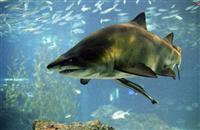
Korea's largest aquarium and one of its most talked about tourist attractions, the Busan Aquarium is a sure-fire winner guaranteed to delight visitors of all ages. The aquarium is a major operation and spread over three levels, with its main tank containing an astounding three million litres of water.The Busan Aquarium is home to roughly 35,000 marine animals from more than 250 species, and features special exhibitions to showcase rare and exotic creatures such as jackass penguins, clawed otters, electric eels, sharks, piranhas, giant turtles, and an assortment of colourful sea jellies.Visitors largely view the sea life from the confines of an impressive 260-foot (80m) underground tunnel, through enormous acrylic windows that allow for photography. Of particular interest to younger visitors is the aquarium's 3D simulator located on the first floor, a cutting-edge piece of technology that gives you a taste of what it must be like to explore the ocean floor on foot.One of the best things to see in Busan and a must for family vacationers, the Busan Aquarium is a delightful way to spend a few hours marvelling at the ocean's riches before heading upstairs and out onto Haeundae Beach to catch some sun.
Address : Haeundae Station, Busan
Website : www.busanaquarium.com
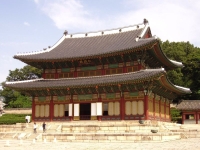
One of the Five Grand Palaces built by the kings of the Joseon Dynasty, Changdeokgung is set within a large park in Jongno-gu and the whole complex has been included on the UNESCO World Heritage list. Located east of Gyeongbok, Changdeokgung is also referred to as the East Palace.It was the favoured palace of many kings of the Joseon Dynasty and in accordance with the Three Kingdoms of Korea period, its buildings blend harmoniously with the natural landscape. At least 600-years-old, this historic site is one of Seoul's touristic gems. The colourful and intricate architecture is set in expansive gardens, a peaceful green place which is ideal for a meditative stroll.
Address : Jongno-gu
Website : eng.cdg.go.kr/main/main.htm
Telephone : +82 (0)2 762 8261/9513
Transport : Subway line 3, Anguk Station, Exit 3. Subway lines 1, 3 or 5, Jongno 3-ga Station, Exit 6.
Opening times : The Palace's operating hours are generally 9am to 6pm but these times can change depending on the season. Check website for details.
Admission : KRW 3,000 for adults and children (7-18) KRW 1,500. Children under 7 are free.
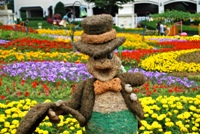
Everland is South Korea's version of Disney Land. This massive amusement park is situated on the outskirts of Seoul and is the perfect daytrip for visitors travelling with kids. Everland has a selection of rides ranging from heart stopping to sedate.The amusement park hosts a variety of restaurants, a safari section, and a snow sledding area for winter visitors. There is also a fantastic water park called Caribbean Bay, a racing track, a golf course, and flower display gardens, as well as a twice-daily procession of cartoon characters and trapeze artists through the park.
Address : 199 Everland-ro, Pogog-eup, Cheoin-gu, Yongin-si, Gyeonggi-do
Website : www.everland.com
Transport : Take bus number 6000 to Yongin from Suwon Station, there is a free shuttle bus from Yongin to Everland.
Opening times : Operating hours are 10am to 10pm
Admission : General Admission: Adults KRW 52,000; Teenagers KRW 44,000; Children KRW 41,000
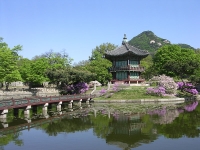
The jewel of Seoul's five historic palaces, Gyeongbokgung was built in 1395 by Lee Seong-Gye. Founder of the Joseon Dynasty, he established the city as the capital of Korea. The magnificent rectangular palace now contains the National Museum of Korea and National Folk Museum of Korea, featuring royal apartments and staterooms, gardens, and elegant lotus ponds.The pavilion features on the 10,000 South Korean won note. The palace is in a process of continual restoration as new archaeological treasures are uncovered and restored to their former glory. This historic palace complex consistently ranks as one of the best loved tourist attractions in Seoul.
Address : 1 Sejong-no, Jongno-gu
Website : www.royalpalace.go.kr
Transport : Five-minute walk from exit 5 of Gyeongbokgung station (Seoul Subway Line 3)
Opening times : The palace's operating hours are generally 9am to 6pm but these times can change depending on the season. Check website for details.
Admission : KRW 3,000 for adults (19-64) and children (7-18) KRW 1,500. Children 6 and under, and people over 65, are free.
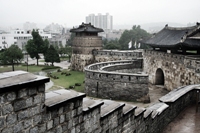
Hwaseong Fortress is yet another of South Korea's UNESCO World Heritage Sites. The fortress is situated in Suwon, south of Seoul central but still within the greater Seoul area. Hwaseong Fortress was completed in 1796 in order to protect the capital from Japanese invasions.The three-and-a-half-mile (5.7km) fortress wall weaves in and out of the modern buildings and roads of Suwon. Visitors to Suwon can climb parts of the fortress wall and marvel at the intricate and often colourful architecture that makes this extraordinary stone edifice blend in to its surroundings in a typically Korean, harmonious fashion.The Hwaseong fortress includes 41 watchtowers, the Great South Gate, Paldalmun, and Seobuk Gongsimdon. There are also some traditional teahouses in the vicinity of the most popular sections of the wall where visitors can stop for a refreshing cup of iced tea.
Address : 910, Jeongjo-ro, Paldal-gu, Suwon-si, Gyeonggi-do
Website : whc.unesco.org/en/list/817
Transport : Take Seoul Subway line 5 to the Suwon station.
Opening times : Operating hours in the summer season are 9am to 6pm and in the winter season 9am to 5pm
Admission : General Admission: Adults KRW 1,000; Teenagers KRW 700; Children KRW 500
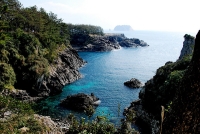
Jeju Island is one of the most popular holiday destinations in South Korea and can be reached by ferry from Busan. Found off the southern tip of the Korean Peninsula, it enjoys relatively warm weather throughout the year. Visitors generally flock to its beaches, as well as the volcanic Mount Hallasan.The island is home to a number of interesting museums, including the Folklore and History Museum, the Independence Museum, and the fascinating Haenyeo Museum which provides valuable insight into the tradition of the Haenyeo women divers of the island.Jeju Island has many fascinating natural wonders, including the Gimyeong Maze, the Manjanggul lava tube cave, the hexagonal-shaped Jusangjeolli cliff, and Cheonjiyeon Waterfall. Iho Beach is made up of both yellow and dark grey volcanic sand, creating beautiful patterns in the tidal waters.Visitors to Jeju Island can go on numerous tours of the island or they can relax on the beaches or at hot spring resorts. There are many hiking trails and going scuba diving is definitely one of the top things to do on Jeju Island.The island has a broad range of hotels and accommodation options and there are many small restaurants serving up regional delicacies ranging from live squid to mandarin oranges, mushrooms, abalone, and wild boar.
Address : Jeju-do
Website : english.visitkorea.or.kr:1001/enu/SI/SI_EN_3_6.jsp?cid=256109
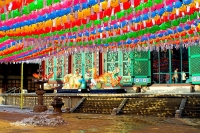
Jogyesa serves as the primary temple of the Jogye Order of Korean Buddhism. First established in 1395, Jogyesa is located in the district of Jongno-gu in central Seoul. In 1998, Jogyesa made international news when several monks occupied the temple for more than 40 days in a power struggle between factions of the Jogye Order.A highlight of this attraction is a lacebark pine, an ancient white tree within its grounds said to be around 500 years old. The principles of Buddhism have been taught at this temple for more than a century and visitors keen to interact with the monks and learn something about their faith can join one of the temple's teaching programmes.
Address : Gyeonji-dong, Jongno-gu.
Website : www.jogyesa.org
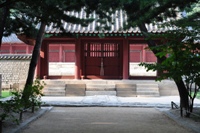
Jongmyo Shrine is a UNESCO World Heritage Site and celebrated as one of Korea's foremost cultural treasures. Built in 1394, it's the oldest Confucian shine in the world and often holds ceremonies, rituals, and traditional dance performances. Jongmyo is the official shrine of Korea's Joseon Dynasty, with it serving as the chief place of worship for the royalty of this line.The shrine is made up of a number of halls as well as a small cloister, with its interior, roofs, and ceilings exquisitely painted and decorated. Jongmyo is the term used for a place where memorial services are performed and it's therefore unsurprising that the shrine is home to more than 40 memorial tablets of past kings and queens of Korea. Tourists visiting Seoul will find that Jongmyo is situated within walking distance of the Changdoekgang Palace and the two attractions can be conveniently combined while sightseeing.
Address : 157 Jong-ro, Jongno-gu
Website : english.visitkorea.or.kr/enu/ATR/SI_EN_3_1_1_1.jsp?cid=264351
Transport : Take subway lines 1, 3 or 5 to Jongno-3-ga subway station.
Opening times : The Shrine's operating hours are generally 9am to 6pm but these times can change depending on the season. Check website for details.
Admission : KRW 1,000 for adults and children (7-18) KRW 500. Children 6 and under, and people over 65, are free.
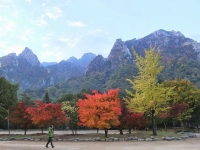
The mountain of Seoraksan in Gangwan Province is one of the most scenic settings in South Korea and is a UNESCO Biosphere Reserve. Seoraksan National Park is home to the country's third highest peak, reached by means of a variety of trails up the mountain. For the less physically inclined, there is a cable car that runs some of the way up the mountain.The most popular time to visit Seoraksan is during autumn, when the surrounding foliage creates a visual feast with the leaves changing from green to the colours of auburn, red, yellow, brown, and gold before dropping. Seoraksan is best accessed from the small seaside city of Sokcho on Korea's east coast.Aside from the gorgeous flora, there is also a host of wild fauna to spot in the reserve. Together with rare plants such as Edelweiss and diamond bluebell, endangered animals like the Amur goral, Korean musk deer, and Tristram's woodpecker are also found within its borders. A total of around 2,000 animal species exist in the park.
Address : Gangwan-do, Sokcho-si, Seorak-dong San 16
Website : english.knps.or.kr/Knp/Seoraksan/Intro/Introduction.aspx?MenuNum=1&Submenu=Npp

Travel Guide powered by Word Travels, copyright © 2023 Globe Media Ltd. By its very nature information in this travel guide is subject to change at short notice and travellers are urged to verify information on which they're relying with the relevant authorities. Neither Globe Media Ltd nor Travel Vogue can accept any responsibility for any loss or inconvenience to any person as a result of information contained above.